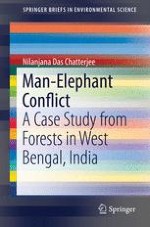2016 | OriginalPaper | Buchkapitel
5. Elephant Migration and Dispersal: A Biogeographic Process
verfasst von : Nilanjana Das Chatterjee
Erschienen in: Man–Elephant Conflict
Aktivieren Sie unsere intelligente Suche, um passende Fachinhalte oder Patente zu finden.
Wählen Sie Textabschnitte aus um mit Künstlicher Intelligenz passenden Patente zu finden. powered by
Markieren Sie Textabschnitte, um KI-gestützt weitere passende Inhalte zu finden. powered by
